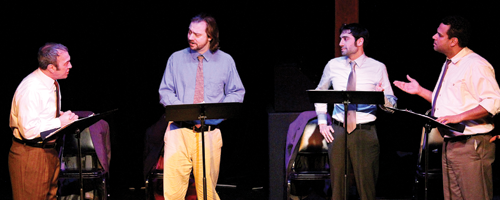Teachers in the Woods
You may have found science boring when you were in high school. But that was before PSU’s “Teachers in the Woods” program was implemented – a program that is teaching science instructors from all over the Northwest a radical, new way to teach.
Under the program, middle and high school teachers spend five weeks of their summer doing field work in a national park. During this time, biologists guide the teachers in researching topics, ranging from alpine pollination to underground fungus.
Teachers who have undergone the program have expressed extreme appreciation for their experience.
“The program is unheard of,” Joanne Fowvog from Lane Middle School said. “I haven’t met a single person who has not been enthralled by the program.”
Forest Research Experience for Science Teachers (FOREST) reported that teachers leave “energized by their experience working in the forest, enthusiastic about doing this work with their students in the fall, and more confident in their level of scientific knowledge and field skills.””The program gives you vision,” Fowvog said. “It’s like somebody taking you to the Disneyworld of science … only this is the real stuff.”Like other teachers, Fowvog’s enthusiasm over the program came especially from the hands-on approach hermentors used.
“Basically, during the training session, we took a biology textbook and cracked it open in the field,” she said. “I didn’t sit in a classroom and listen to people talk.”
Fowvog is now motivated to teach her own students in the same way. She said the approach will especially inspire her middle schoolers, an age group more enthusiastic about nature than paperwork.
Students at Lane Middle School are already reaping the benefits of Fowvog’s experience with “Teachers in the Woods.” Fowvog, along with the four other science teachers at her school, recently turned her schoolyard into a natural habitat for biology.
“Students can now do a field study of the area,” Fowvog said. Students address questions such as “How much water did the field collect from rain?” or “What is the difference in temperature between shaded and non-shaded areas?”
By tackling the same practical concerns scientists address themselves, Fowvog believes her students will flourish.
“When kids get exposed to the appropriate practices in any field, they are often as capable as adults,” she said.
They are also more successful in their test scores. RMC Research reported that out of the 8,000 students influenced by Teachers in the Woods, more than two thirds increased their scores in content and concepts, design, outdoor skills and field process skills.
Dr. Marion Dresner, director of the Teachers in the Woods program, stated, “92 percent of students in programs where the environment was the integrative context for learning academically outperformed their peers in traditional programs.”
Dresner continued, “These students earned better scores in science achievement tests, were better able to apply science in real-world situations and had greater enthusiasm and interest in learning science.”The National Science Foundation (NSF) has now shown interest in the program as well. NSF recently awarded Teachers in the Woods a $1.1 million grant. Dresnerwill use the grant to expand the program into Colorado and Wyoming.



